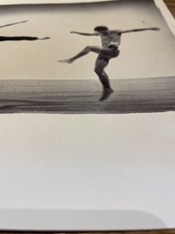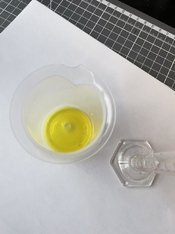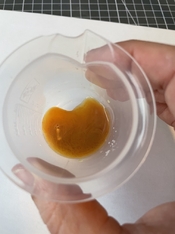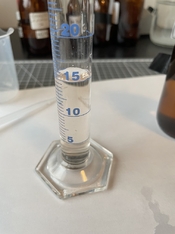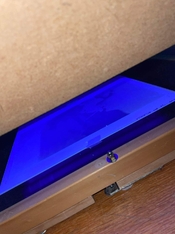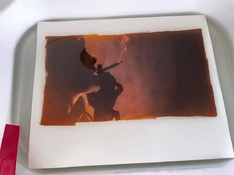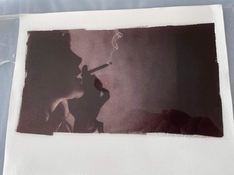largo
Member
- Joined
- Jun 22, 2009
- Messages
- 61
- Format
- Medium Format
I just experienced a severe staining of my Van Dyke Brown print after I toned them in a gold thiourea toner (Clerc or Sandy King #2 formula). The toner work well in the sense that it indeed cooled the tones like expected, but all the highlights and the paper base is stained with a sepia-like color, almost like if I toned my prints with tea ! Because of the sepia tint, I suspect sulfides to be somehow involded, of silver sulfides ?
I am sure that the staining is related to the gold toning step (but maybe also related to the preceding steps) , because my tray dedicated for toning was too small for the print, so I had to bend the print so that the image part was fully submerged in the gold toner. As a consequence, the bottom part of the print is not stained at all since it was not submerged in the toner bath (see the attached pics) :

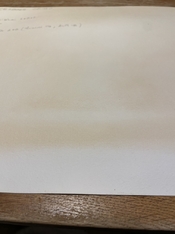 <== back of the print, see the bottom part not stained.
<== back of the print, see the bottom part not stained.
3 remarks before I detail my process :
1) I toned my VDB print BEFORE fixing, as recommended by many master printers : Sandy King, Donald Nelson, Dick Stevens (the later for kallitypes, but they are similar w.r.t. toning), Tim Rudman (in his Toning book)
2) the 1% gold chloride solution that I use to mix my gold toner is old (about 10 years old), but I read that it keeps very well. It looked OK, clear and yellowish.
3) I don't know much about my tap water, but I do know that it has a pH of 7.
Here is my process :
1. Sensitizer : 16 drops of ferric ammonium citrate + 16 drops of tartric acid + 16 drops of silver nitrate. The sensitizer is perfect, clear, fresh, no precipitate at all.
2. Paper (Bergger COT 320) is sensitized (single coating) and dried during 1 hour
3. Exposure : 13 minutes under UV lamp
4. Clearing in demineralized water with a teaspoon of citric acid : 5 minutes with agitation
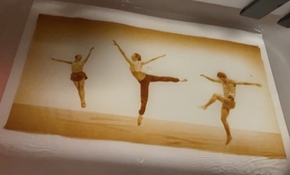
5. Rinse : 3 minutes in a tray of running _tap_ water : note that I used tap water here, not demineralized water.
6. Toning : 8 minutes in a gold thiourea toner ("Sandy King’s Gold Toner #2"); here is its formula (CLERC Formula, with thiourea) :
- Pour 500 ml demineralized water
- Add 25 ml 1% gold chloride solution
- Add 25 ml 1% thiourea solution (1 g thiourea in 100 ml)
- Add 0.25 g tartaric acid
I observed after adding the 1% thiourea solution to the water+gold chloride that the mix took a brownish color, I don't know if this normal or not ? (see the attached pic) :


7. A short rinse in tap water before fixing
8. Fixing in weak sodium thiosulfate solution, during 2 minutes
8. Hypo-clearing in a 1% sodium sulfide solution, during 2 minutes
9 : Final wash : 30 minutes in running tap water.
I already successfully toned my VDB prints with platinum or palladium, without staining...
I read here (https://www.photrio.com/forum/threa...ixing-role-of-citric-acid.117388/post-1921485) that if gold thiourea toner is used before fixing, thiourea will cause staining. That instead alkali gold toners should be used when gold toning before fixing. The thread is about salt print, but I think it applies to VDB prints.
I see that the gold toner for VDB sold by Bostick & Sullivan does not contain thiourea, but ammonium thiocyanate, this is the one used in this video :
What do you think ? What went wrong ?
Thank you for your help !
I am sure that the staining is related to the gold toning step (but maybe also related to the preceding steps) , because my tray dedicated for toning was too small for the print, so I had to bend the print so that the image part was fully submerged in the gold toner. As a consequence, the bottom part of the print is not stained at all since it was not submerged in the toner bath (see the attached pics) :
 <== back of the print, see the bottom part not stained.
<== back of the print, see the bottom part not stained.3 remarks before I detail my process :
1) I toned my VDB print BEFORE fixing, as recommended by many master printers : Sandy King, Donald Nelson, Dick Stevens (the later for kallitypes, but they are similar w.r.t. toning), Tim Rudman (in his Toning book)
2) the 1% gold chloride solution that I use to mix my gold toner is old (about 10 years old), but I read that it keeps very well. It looked OK, clear and yellowish.
3) I don't know much about my tap water, but I do know that it has a pH of 7.
Here is my process :
1. Sensitizer : 16 drops of ferric ammonium citrate + 16 drops of tartric acid + 16 drops of silver nitrate. The sensitizer is perfect, clear, fresh, no precipitate at all.
2. Paper (Bergger COT 320) is sensitized (single coating) and dried during 1 hour
3. Exposure : 13 minutes under UV lamp
4. Clearing in demineralized water with a teaspoon of citric acid : 5 minutes with agitation

5. Rinse : 3 minutes in a tray of running _tap_ water : note that I used tap water here, not demineralized water.
6. Toning : 8 minutes in a gold thiourea toner ("Sandy King’s Gold Toner #2"); here is its formula (CLERC Formula, with thiourea) :
- Pour 500 ml demineralized water
- Add 25 ml 1% gold chloride solution
- Add 25 ml 1% thiourea solution (1 g thiourea in 100 ml)
- Add 0.25 g tartaric acid
I observed after adding the 1% thiourea solution to the water+gold chloride that the mix took a brownish color, I don't know if this normal or not ? (see the attached pic) :
7. A short rinse in tap water before fixing
8. Fixing in weak sodium thiosulfate solution, during 2 minutes
8. Hypo-clearing in a 1% sodium sulfide solution, during 2 minutes
9 : Final wash : 30 minutes in running tap water.
I already successfully toned my VDB prints with platinum or palladium, without staining...
I read here (https://www.photrio.com/forum/threa...ixing-role-of-citric-acid.117388/post-1921485) that if gold thiourea toner is used before fixing, thiourea will cause staining. That instead alkali gold toners should be used when gold toning before fixing. The thread is about salt print, but I think it applies to VDB prints.
I see that the gold toner for VDB sold by Bostick & Sullivan does not contain thiourea, but ammonium thiocyanate, this is the one used in this video :
What do you think ? What went wrong ?
Thank you for your help !


